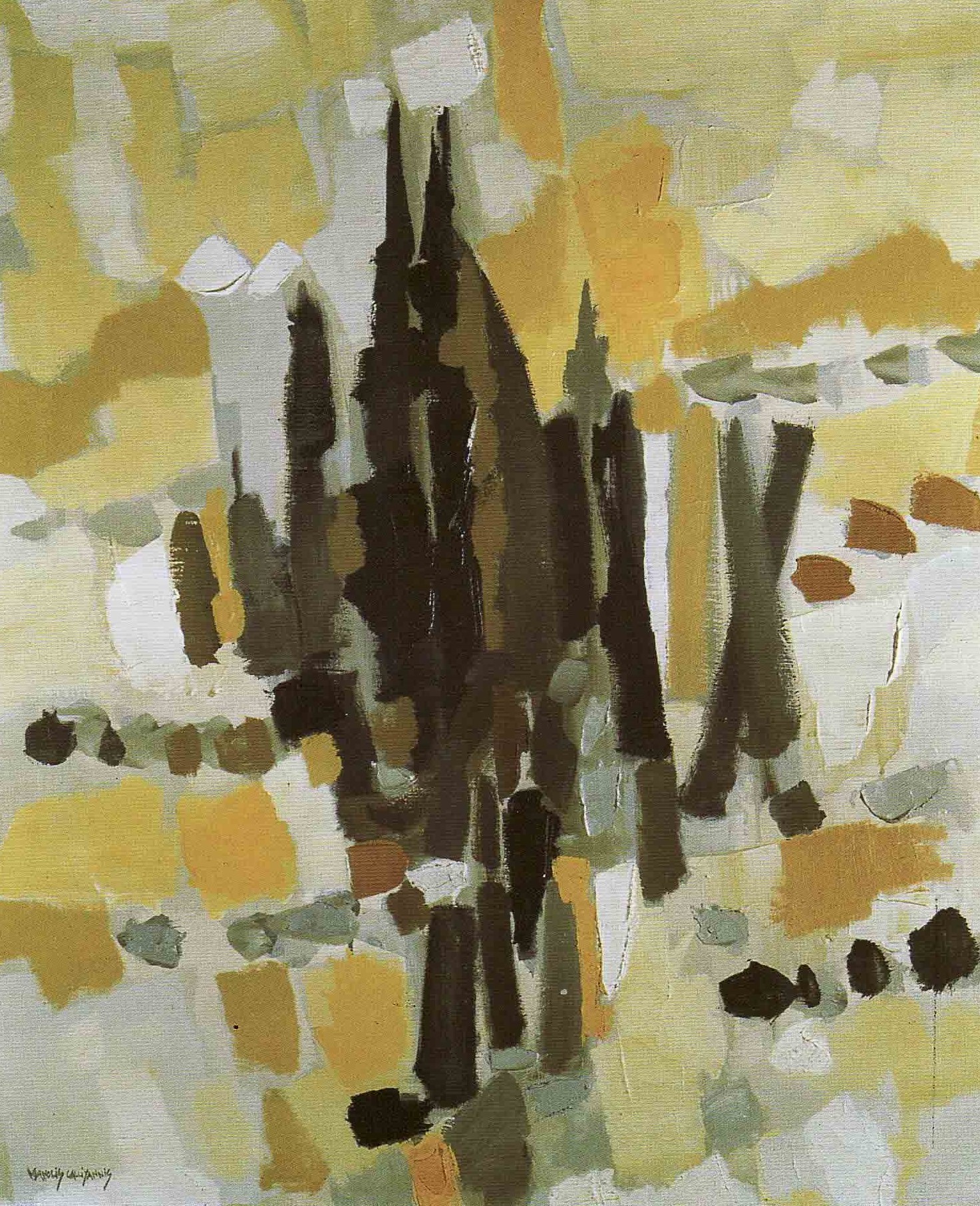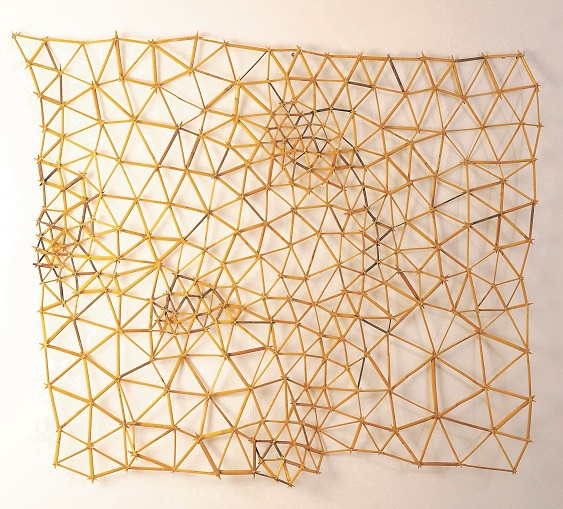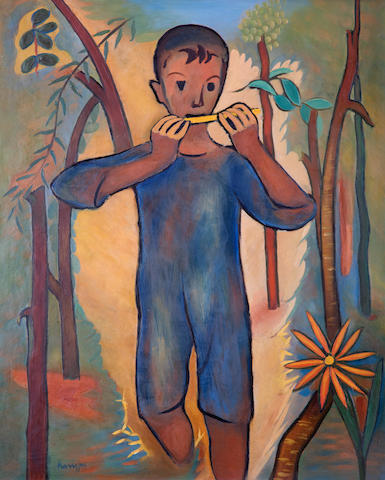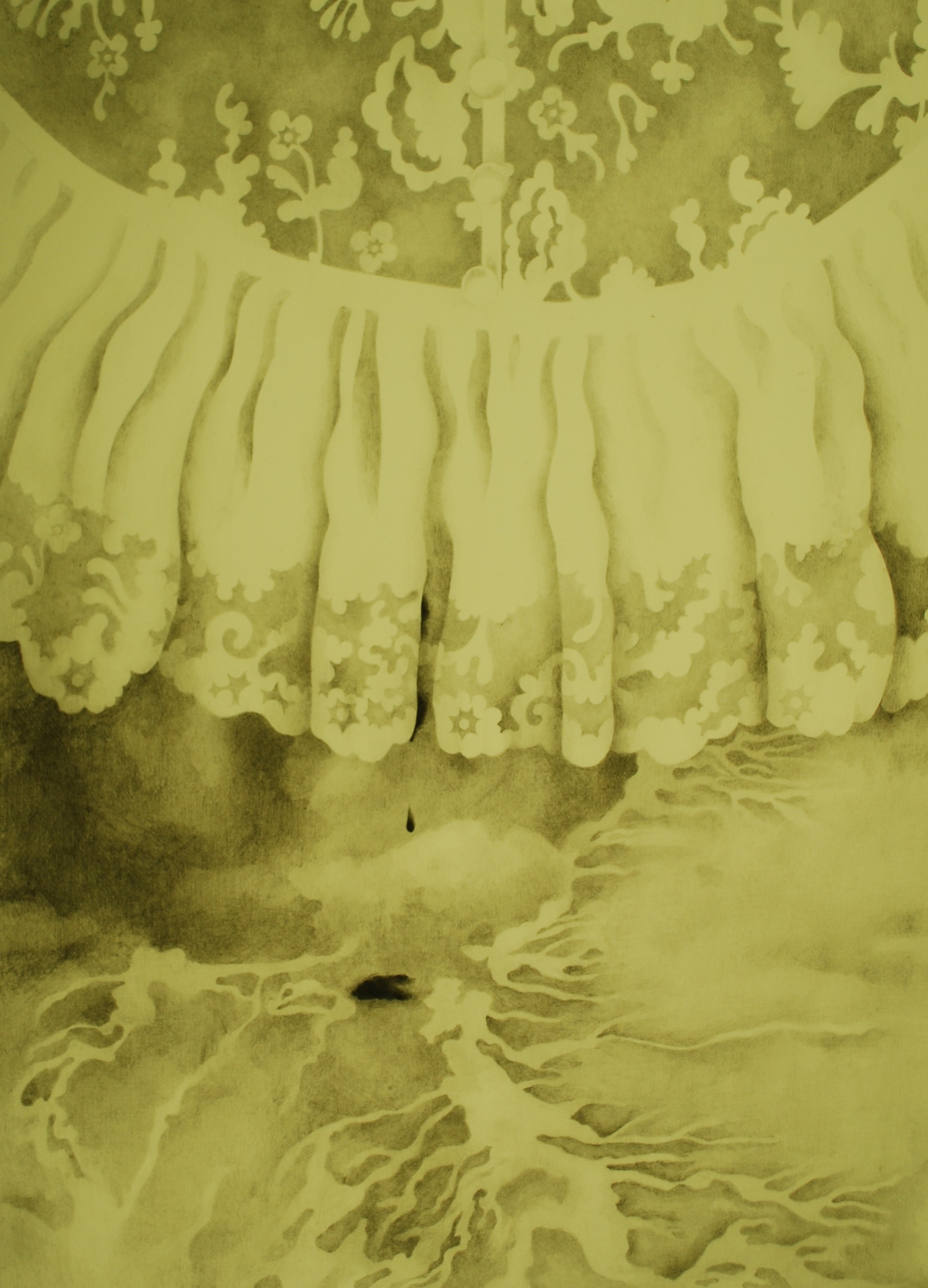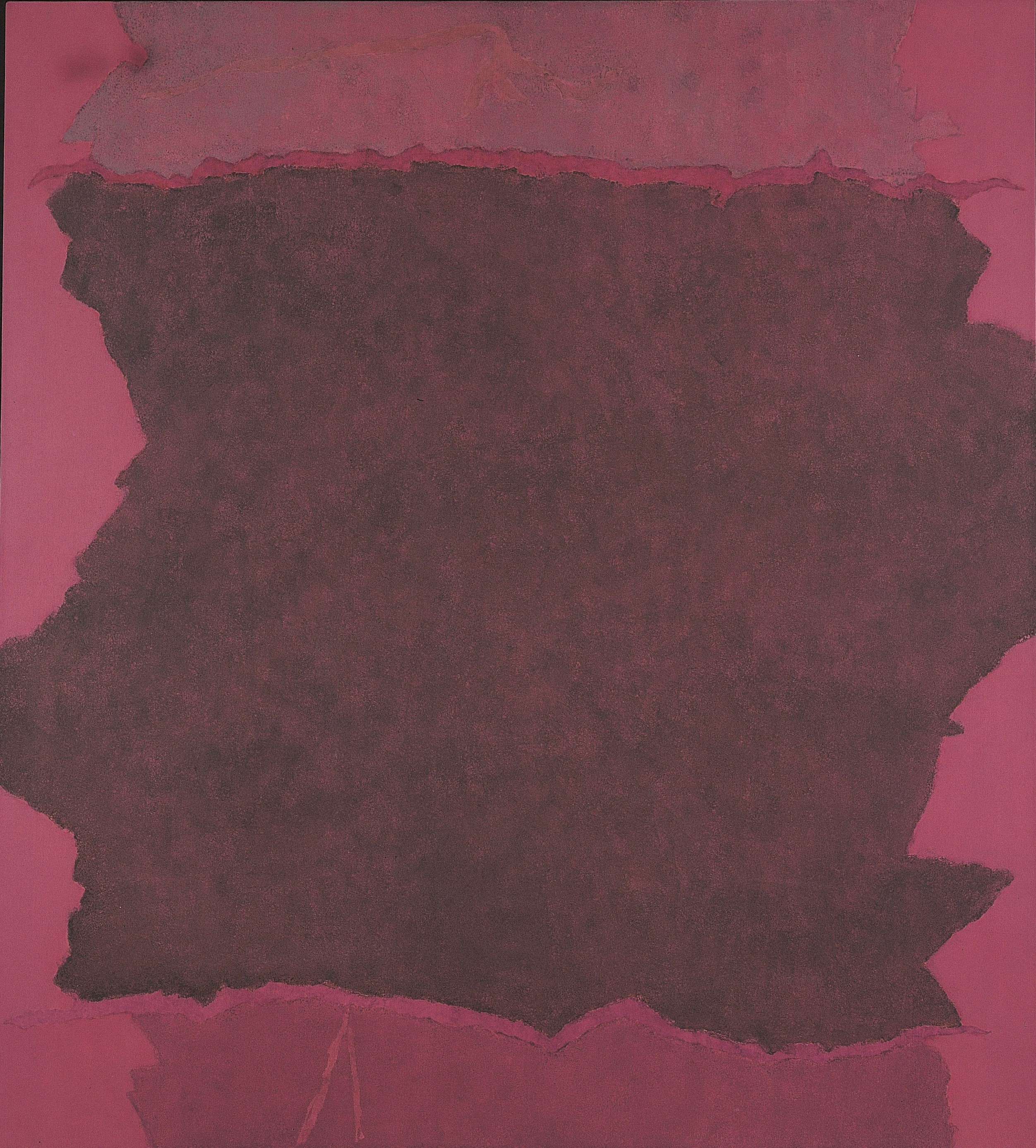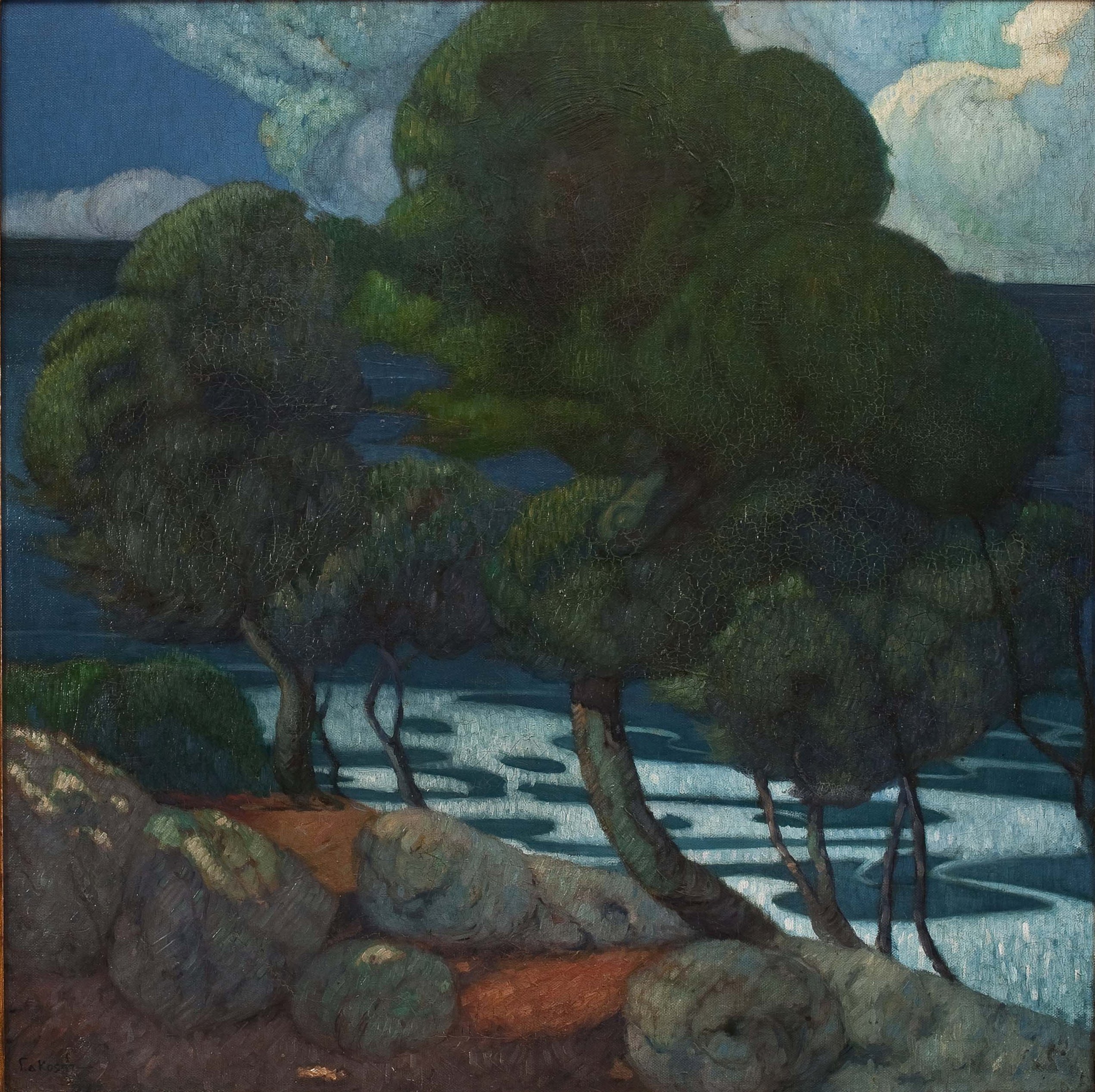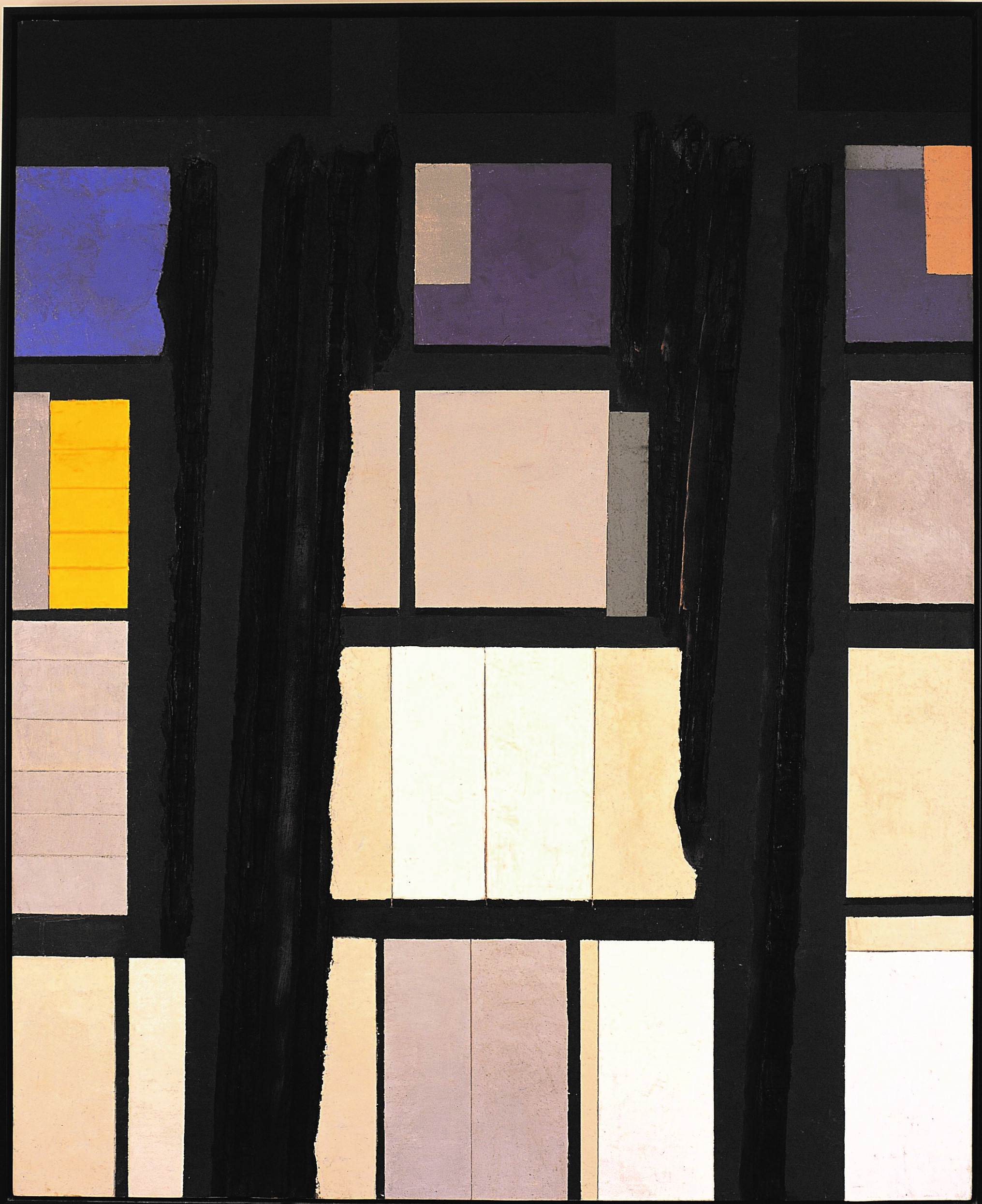Manolis Calliyannis, Cypress Trees in the Sun
Cypress Trees in the Sun by Manolis Calliyannis is an important work of Greek landscape painting. The painter worked almost exclusively with the landscapes of his home island, Lesvos. The composition is dominated by colour and bright light. The style of the piece is essentially impressionist.
Bold strokes and emphasis on colour
The distinct colour forms render, on the one hand, the presence of the cypresses and, on the other, the sunny feel of the composition. These are successive strokes that gradually construct the end result.
The dominant colours are the shades of yellow and green. White comes to add even more light and brightness to the end result.
The cypress and its meaning
Calliyannis often uses the cypress in his works, attaching a particular symbolism to it.
The simple form of the tree, in terms of both shape and colour, presents the painter with the opportunity of giving it an, oftentimes, melancholic esoteric feeling. But this is skilfully balanced off by the brilliant light of the sun in the background of the composition.
A typical landscape
The painting Cypress Trees in the Sun is very typical of Calliyannis’ themes. It underlines as best possible the words of the painter himself: “For the first time, looking at the Mytilene landscape again, I gain immediate visual thrills that overtake me.”
It is these visual thrills and the esoteric turmoil they cause that Calliyannis attempts to transfer onto the canvas.
His life in a nutshell
Manolis Calliyannis (1923-2010) was born on the island of Lesvos. He took his first lessons in Painting and Drawing there, studying under local painter Antonis Protopatsis from 1938 until 1940.
He studied Architecture at the University of Witwatersrand in Johannesburg (1945-1948), but he never graduated.
In 1959 Calliyannis moved to Paris where he worked professionally as a painter. He returned to Greece in 1978.
For many years (1979-1999) he was the director of the MuseumLibrary Stratis Eleftheriadis-Tériade in Mytilene.
Artistic influences
During his stay in Paris, Calliyannis was influenced by abstract art. His first works showed those influences.
In his pieces, he used the teachings of postimpressionist painter Paul Cézanne. The influence of Cézanne can be mainly seen in the volumetric use of colour and the geometrical perception of form.
Impressionism, in general, had an obvious impact on Calliyannis’ work, with an emphasis on rendering fleeting impressions and the feeling of transience.
Favourite themes
Calliyannis worked mostly with landscapes. In his work, he mainly depicted sceneries from his home island, Lesvos.
The Greek landscape, and especially the landscape of Lesvos, was his almost singular theme, the basis of his entire artistic production.
Calliyannis’ main inspiration for this work was his permanent return to Greece in the 70s.
Artistic style
Calliyannis was able to successfully walk the line between representation and abstraction.
Light and colour are the 2 main pillars of his painting. It is on them that he bases his effort to realistically, and at the same time, poetically transcribe the visual reality that surrounds him.
Calliyannis’ works harmoniously combine abstract representation with imposing colours. The almost impressionist rendering of the Aegean landscape is also typical of his work.
The work of art in our publications
Cypress Trees in the Sun by Manolis Calliyannis is referenced in the following Alpha Bank publications:
- The Alpha Bank Collection. Greek Art from 1920 until Today, edited by Irene Orati. The publication accompanied the Art Collection’s exhibition at the Macedonian Museum of Contemporary Art in Thessaloniki.
Buy the publication The Alpha Bank Collection. Greek Art from 1920 until Today on the Alpha Bank eshop. - Mazi magazine (issue 43, January 2018).
In other literature
The sequence of works the painting is part of is referenced in Zygos magazine (issue 1 April 1973).
The painting Cypress Trees in the Sun hangs at the Alpha Bank branch of Pefka Thessaloniki, at 66 3rd G. Papanikolaou Street. It can be accessed during the branch days and hours of operation.
Research visits can be organised upon request.
Contact us to book your visit.
